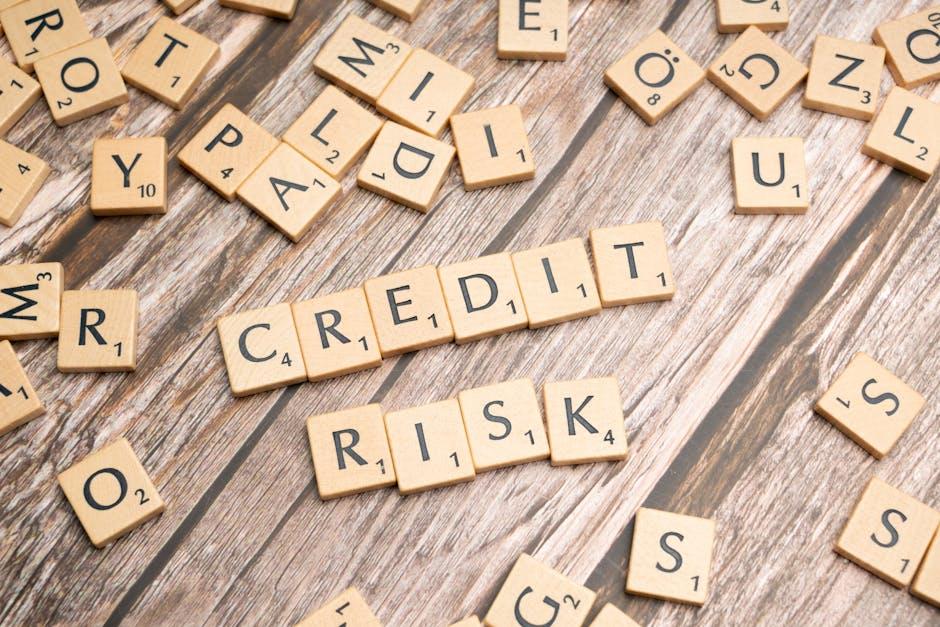In the digital age, where every click, swipe, and transaction is meticulously recorded, the credit score has emerged as a pivotal determinant of financial destiny. Yet, beneath its seemingly objective facade lies a labyrinth of hidden risks that could redefine your financial future. Welcome to the intricate world of credit scoring models, where algorithms wield the power to open doors or erect barriers to your dreams. As we delve into the depths of these enigmatic systems, we will uncover the unseen biases, overlooked variables, and systemic vulnerabilities that may lurk within. Prepare to challenge your understanding and gain a new perspective on the forces shaping your financial narrative.
Unveiling the Blind Spots in Credit Scoring Algorithms
In the realm of credit scoring, algorithms have become the gatekeepers of financial opportunity, yet they are not infallible. These digital arbiters often harbor blind spots that can lead to unintended consequences. For instance, reliance on historical data can perpetuate existing biases, resulting in unfair credit assessments for marginalized communities. Additionally, the lack of transparency in algorithmic decision-making processes makes it challenging for consumers to understand or contest their scores.
- Data Bias: Historical biases can skew results, affecting minority groups disproportionately.
- Lack of Transparency: Consumers are often left in the dark about how their scores are calculated.
- Over-reliance on Quantitative Data: Ignoring qualitative factors can lead to incomplete assessments of creditworthiness.
These blind spots not only risk undermining consumer trust but also pose a threat to the integrity of financial systems. As we move forward, it’s crucial to scrutinize these algorithms, ensuring they are fair, transparent, and inclusive. Only then can we truly unlock the potential of technology in financial services.

Decoding the Bias: How Data Skews Your Creditworthiness
In the complex world of credit scoring, the data used to evaluate your financial reliability is often a double-edged sword. While it aims to provide an objective measure of your creditworthiness, it can inadvertently introduce biases that skew the results. Algorithms designed to process this data can sometimes amplify existing disparities, leading to unfair outcomes. Imagine a scenario where your credit score is impacted not by your financial behavior but by the demographic data associated with your zip code or even your social media activity. Such factors, although seemingly innocuous, can create a distorted picture of your financial health.
- Demographic Data: Factors like age, gender, and ethnicity can unintentionally influence credit scores, despite being unrelated to financial responsibility.
- Geographical Bias: Your location might affect your score due to regional economic conditions, which may not reflect your personal financial habits.
- Alternative Data Sources: Non-traditional data, such as social media behavior, is increasingly used, raising concerns about privacy and relevance.
Understanding these hidden biases is crucial for both consumers and lenders. As consumers, being aware of these factors can help you navigate the financial landscape more effectively. For lenders, acknowledging these biases is a step towards creating a more equitable financial system. The challenge lies in striking a balance between leveraging data for accurate assessments and ensuring fairness in credit evaluations.

Navigating the Pitfalls: Protecting Your Financial Future
In the intricate world of credit scoring, it’s crucial to understand the hidden variables that can subtly impact your financial health. While many believe their credit score is a straightforward reflection of their financial behavior, the reality is far more complex. Beneath the surface, algorithms weigh factors that may seem unrelated to your creditworthiness. Consider the following elements that might be influencing your score without your knowledge:
- Utilization Ratios: Even if you pay your credit card bills on time, high utilization can negatively affect your score. Aim to keep your usage below 30% of your total credit limit.
- Credit Mix: Having a diverse range of credit accounts, such as credit cards, mortgages, and auto loans, can positively impact your score, even if you manage them all well.
- Hard Inquiries: Each application for credit results in a hard inquiry, which can lower your score temporarily. Be strategic about when and where you apply for new credit.
By understanding these nuances, you can take proactive steps to safeguard your financial future, ensuring that your credit score truly reflects your responsible financial habits.
Empowering Change: Strategies for a Fairer Credit System
In the pursuit of a fairer credit system, it is crucial to scrutinize the very foundation of credit scoring models. These models, often shrouded in complexity, can inadvertently perpetuate inequality and bias. By understanding the hidden risks within these systems, we can begin to craft strategies that empower change. Bias in data is a significant concern; historical data may reflect past discrimination, leading to skewed results that unfairly disadvantage certain groups. Moreover, lack of transparency in scoring algorithms means consumers often remain in the dark about how their scores are calculated, making it difficult to contest or understand the factors affecting their creditworthiness.
To address these issues, consider implementing the following strategies:
- Data Audits: Regularly review and cleanse data sets to ensure they are free from historical biases.
- Algorithm Transparency: Advocate for clear and understandable explanations of how credit scores are determined.
- Inclusive Data Sources: Incorporate non-traditional data, such as rental and utility payments, to provide a more comprehensive view of an individual’s financial behavior.
- Regulatory Oversight: Support policies that enforce fairness and accountability in credit scoring practices.
By embracing these strategies, we can work towards a credit system that truly reflects an individual’s financial health, fostering an environment of fairness and opportunity for all.





